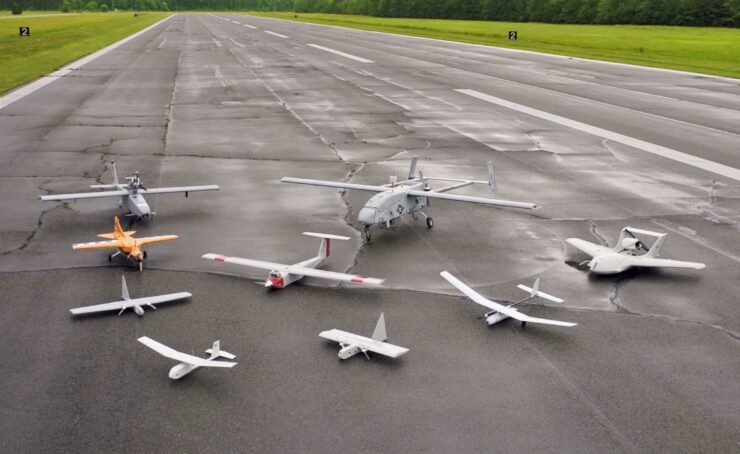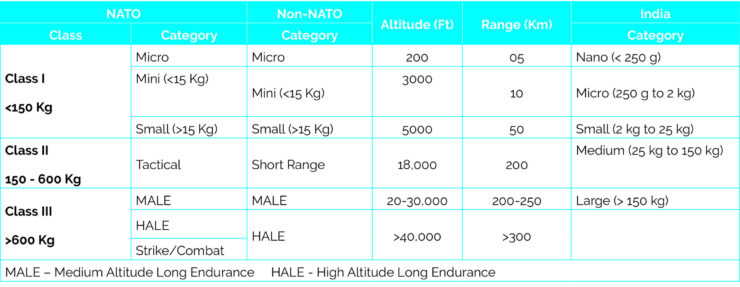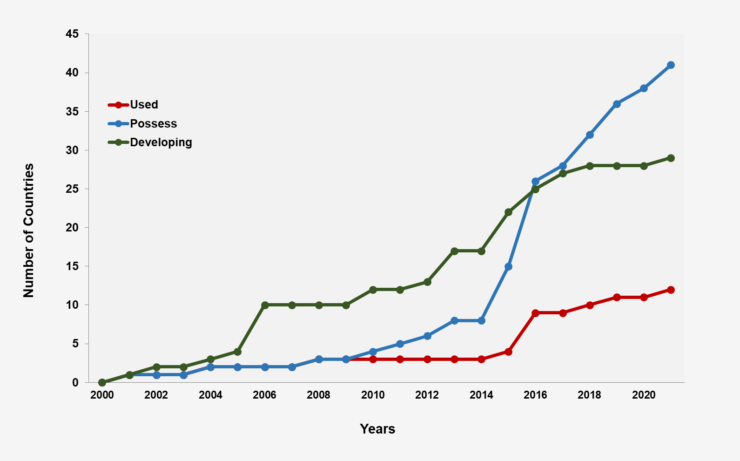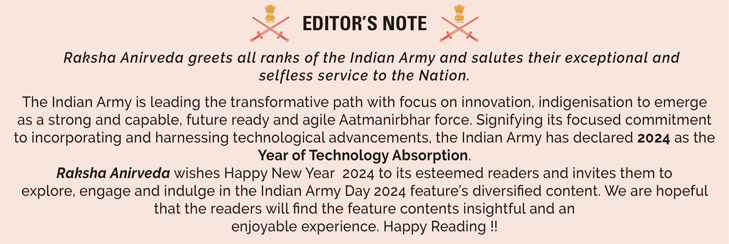
The Indian Army was the first of the three services to introduce Unmanned Aircraft Systems (UAS) in India, with the induction of the Israeli Searcher Mk1 in the late 1990s.Over the years, the fleet of UAS has grown, and currently, the Heron and Searcher Mk II UAS, imported from Israel, are the mainstays for all three services. However, considering the demands of modern warfare, the Indian Army must expand its fleet of unmanned systems, both in terms of quantity and class diversity.
UAS are systems that consist of the unmanned aircraft, communication network, ground control station, associated equipment, and personnel operating the system. The Unmanned Aerial Vehicle (UAV), an aircraft without a human pilot, is a subsystem of the UAS. UAS has three distinct characteristics: (a) the aircraft is remotely piloted; (b) the ground station retains positive control over the aircraft, and the aircraft can be manoeuvred remotely; and (c) the UAVs are designed to be reused, unlike missiles and other disposable projectiles.
India’s drone rules of 2021 have transformed the world of unmanned systems in India from “dull” to “exciting,” “dirty” to “beautiful,” and “dangerous” to “friendly.” However, to be considered a serious player on the global stage, India must discard the mindset of tiny drones and graduate to the larger canvas of UAS. One of the major drawbacks of the policy is that the UAS is classified solely based on weight, ignoring other key performance parameters, which is not in tune with international standards of classification (see table below). Classification determines the capabilities of the systems, and hence, correct classification is critical for the development and employment of UAS.
UAS Classification

Unmanned systems are capable of performing a wide range of tasks, some of which are listed in the table below, and thus serve as a potent force multiplier in any combat situation. UAS provide real-time information on demand, which facilitates the timely and correct application of firepower and forces. Therefore, it is imperative for commanders at all levels to have integral assets at their disposal, both for kinetic and non-kinetic applications.
UAS Capabilities

The 1990–91 Operation Desert Storm is often referred to as the first UAV war. During the Iraq War, the US military used many UAS of various classes. According to a US Navy report, at least one UAV was always airborne during the desert storm. The unprecedented success of unmanned systems during the war powered the development of UAS across many countries. The ongoing Russia-Ukraine conflict has established a new benchmark for the application of UAS, with both sides employing systems of various classes in large numbers. A correlation between combat echelons and UAS classes is shown in the figure below. The conflict has witnessed the large-scale employment of commercial drones for surveillance and as an improvised weapon platform. Due to a scarcity of UAS at the lower levels of combat, both sides were forced to resort to such desperate measures.

UAS Class-Combat echelon correlation
Expensive (180–220 million USD) HALE UAS with transglobal ranges are not a cost-effective option in the Indian context. The MALE UAS with a range of 250 to 350 km, endurance exceeding 20 hours, and a ceiling altitude in excess of 6000 m adequately meet the requirements. However, as evident from the Russia-Ukraine conflict, there is an urgent need to empower the lower formations and battalions/regiments with integral UAS to facilitate a seamless flow of real-time information. The smaller systems are relatively less expensive, and hence larger quantities can be procured and deployed.
Although the UAV is primarily used for ISTAR (intelligence, surveillance, targeting, and reconnaissance) missions, there has been a significant surge in the use of the UAV as a weapon platform in recent years (see figure below).
Rise of Armed UAS

The origins of the hunter-killer concept can be attributed to the MQ-1 Predator, the first armed UAV. The Predator’s success propelled the rise of armed UAS. Azerbaijan used armed UAVs in the Armenia-Azerbaijan conflict, releasing lethal loads on other fighting elements such as tanks, armoured fighting vehicles, artillery guns, rocket launchers, and missile sites. The Armenians were unable to repel the attack due to outdated radar and anti-aircraft systems. The effective use of armed UAVs, combined with the lack of credible Armenian air defence, tipped the scales in Azerbaijan’s favour. Although UAVs are being glamorised as a weapon platform, the size of the aircraft limits the quantum of weapons that can be carried on board. These platforms are best suited for precision strikes at high-value targets. When employed en masse, the dividends can be out of proportion. Miniaturisation of payload and consequent weight reduction facilitate weaponising smaller UAVs. Low-cost armed tactical and mini UAVs, including swarm configurations, have the potential to populate the tactical battle space, altering tactical domain dynamics.
The future of the Indian military’s UAS capabilities will be determined by three key factors. First, the way Indian industry seizes the opportunity; second, government support for the UAS ecosystem; and lastly, the Indian military’s approach to the UAS. DRDO and its associates are the best suited agencies for MALE class of UAS because of high capital requirement. With a track record of cost overruns and failure to meet deadlines, DRDO should not be tasked with tactical, mini, and micro systems. Lower technological complexity and lower capital investment for smaller UAS present an opportunity for India’s capable UAS industry to become a major global player in an exponentially growing market. Smaller systems, unlike the MALE and HALE classes, can be designed for both military and civil applications. The dual-purpose prospects of the smaller UAS open a huge window of opportunity in a sector with an anticipated 18 to 20 percent CAGR.
The government support for the UAS ecosystem is a necessity not only for the military’s capability development but also to realise India’s ambitious aim of becoming a global UAS hub. A successful, pathbreaking design can catapult India onto the global stage. Not all innovative designs will succeed, and hence, private players are unlikely to fund such risky ventures. Therefore, the government must earmark funds to encourage innovative designs at the nascent stage itself. This is particularly relevant for small companies struggling for investment. Components used in the manufacture of UAS, such as the airframe, motors, engine batteries, software, and many other components, should be subject to lower taxes in order to discourage the import of cheap Chinese products. Ironically, some of the Chinese imports attract lower duty, while the Indian manufacturers have to dish out higher taxes. At least in the near future, Indian companies will have to rely on imports for some of the more sophisticated components involving complex technologies. Import duties on items like high-end cameras and other sensors that are not manufactured indigenously should be reduced to the extent possible, and the components manufactured indigenously must be provided with a tax advantage.
The lack of a testing and certification facility is a significant impediment to the development of indigenous systems. Establishing a testing and certification facility will facilitate easy access and thus meet the testing needs of the domestic unmanned systems industry. An integrated testing facility for UAS that will provide the necessary mechanical, electrical, electronic, and flight-testing infrastructure for promoting and facilitating UAS development in the country is an urgent and inescapable requirement. The testing facility should have the capability to evaluate the airworthiness, mechanical safety, electrical safety, aviation safety and security, and overall performance of systems. Furthermore, the government should empower the agency to provide component, system, and all other equipment certification in accordance with applicable standards and codes.
The army must address two major voids in its UAS arsenal: the lack of armed UAS at all levels, and the absence of dedicated UAS for division and below. The proposed Project Cheetah to weaponise the Israeli Heron is a step in the right direction. With satellite navigation, specialised sensors, longer surveillance missions, and the ability to conduct precision strikes, this upgraded MALE-class UAS will fill the void for corps and above. The divisions must be equipped with tactical class UAS: brigades with mini, battalions/regiments with micro, and companies and equivalents with nano. All formations and units must also have armed counterparts of the corresponding UAS class. Military requirements are propelling the growth of the UAS industry worldwide, including in India. The Indian military must also play an important role in nurturing the fledgling unmanned industry. It is therefore imperative to strike a balance between the security requirements and current capabilities of the industries in India. Futuristic technology or niche technology owned by a small number of manufacturers worldwide must be avoided when outlining the specifications. A graduated approach to capability development will enable the Indian UAS industry to mature and eventually produce world-class products.
UAS have been employed as both a “force multiplier” and a “force” in modern warfare. It has been established that the availability of superior UAS creates a competitive advantage that can translate into a battle-winning factor. Conversely, the lack of UAS to provide real-time information and precision strikes on required basis can be disproportionately detrimental. Considering the capabilities of our adversaries, particularly along the northern borders, the induction of smaller systems at division and below and armed UAS across all levels demands urgent attention. To meet the growing demands of the three services, particularly the army, it is equally important for the government to maintain the momentum of reforms in the UAS sector. To meet the challenging demands of the Indian Army’s operational requirements, the domestic industry must step up and raise the bar in UAS technology. A consultative, collaborative, and synergistic approach between the government, military, and industry is a must to fill the glaring gaps in India’s UAS capabilities.
-The author, amongst the pioneers of UAS in India, has spent the last 20 years developing a niche specialisation in the technology. He is currently pursuing his PhD on UAS. The views expressed are personal and do not necessarily reflect the views of Raksha Anirveda











